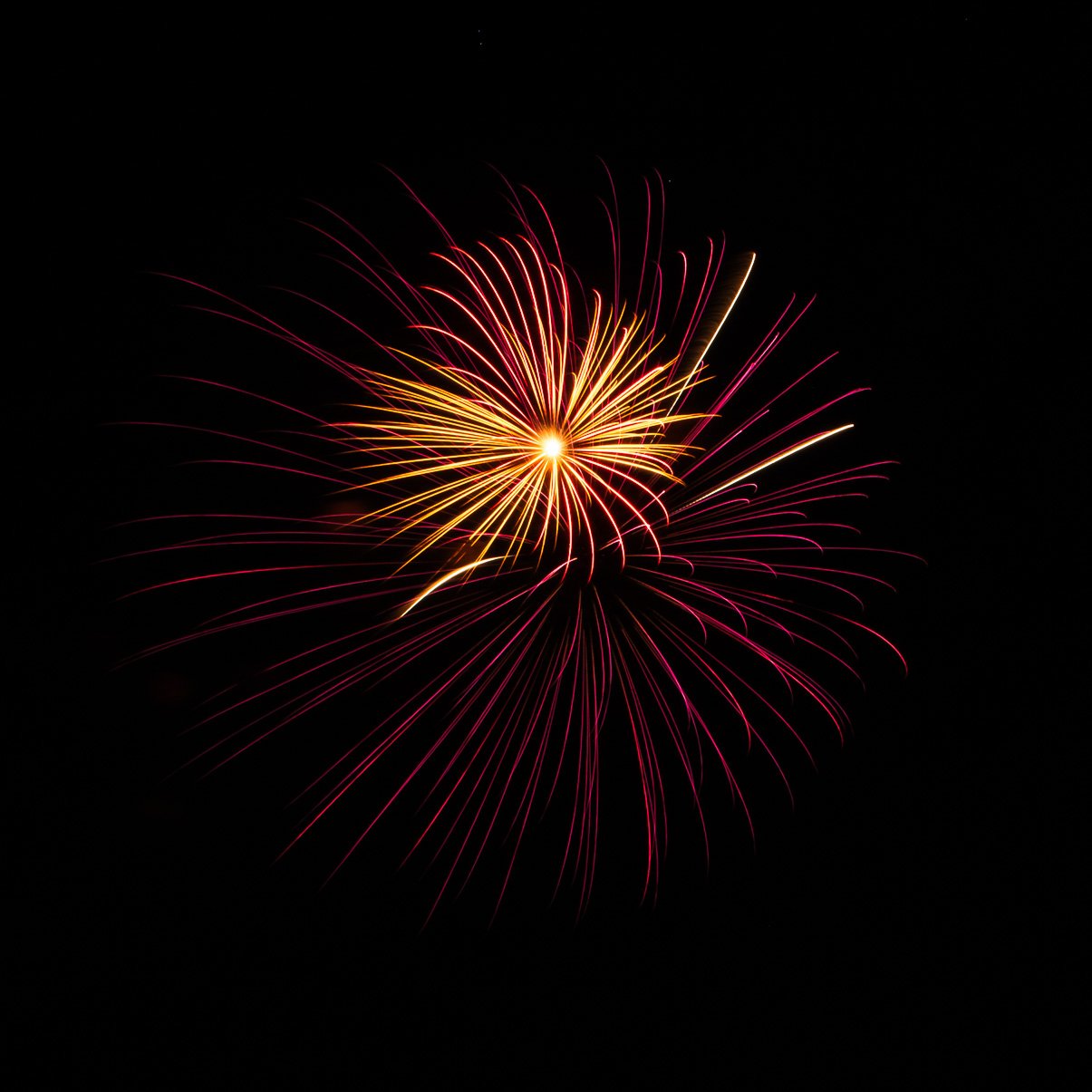Photographing Fireworks
Last year, on the 4th of July, I made my first attempt at photographing fireworks. I had no plan, did no research, and just went for a walk and tried to take photos of some fireworks in the distance. It was a complete failure. This year was different.
2023 marked the first time in about a decade that the city I live in put on a fireworks show, and this time I went prepared. Instead of searching the Internet for everyone’s options on how to shot fireworks, I turned to my bookshelf and pulled out Exposure Photo Workshop, written by Jeff Wignall and published by Wiley. This is not a new book. My copy was published in 2008 and I picked it up at a used book fair put on by a local school district (you can read more about that in my “Doors” blog post). But here’s the deal, exposure hasn’t changed in the last 15 years, so it is all still good advice (the latest version of Exposure was published in 2011). Based on Mr. Wignall’s advice, here is my setup for the images that follow:
Camera Settings
Use a tripod
Shoot with a wide lens. I shot at 24mm using my Nikon AF-S Nikkor 24-70mm f/2.8G ED lens.
ISO 200. This worked great for me but you may need to adjust for your goals.
Aperture is only relevant if you have background that you also want in focus. There wasn’t a background I wanted to capture, but I set my aperture to f/22 anyway.
Set your shutter speed to Bulb mode
Use a locking remote trigger.
This can be either a physical trigger that is wired or wireless, or, if your camera supports it like mine does, you can use your smartphone as the remote trigger (see instructions below for using the Nikon Smartbridge app).
With Bulb mode and a locking trigger, one press of the trigger will lock the shutter open, and it will stay open until you press the trigger again to close it.
Leave the shutter open from 3 to 9 secs or more, depending on your goals
If you do not have a locking remote trigger, you can still use Bulb mode, but you have to press and hold the shutter release down to keep the shutter open. Releasing the shutter will close it. This method will potentially introduce a good amount of blur, so use it at your discretion.
That’s it, but there is a catch. It is a bit of a guess as to what you are capturing as most DSLR cameras (I don’t know if this is still true on mirrorless cameras) will not allow you to operate Bulb mode with the shutter open and Live View at the same time. Which means you cannot see what you are photographing. You, of course, can look through the viewfinder, but then you risk bumping the camera and introducing blur, so you may need to take a few test shots to get everything framed appropriately.
Mr. Wignall does offer other methods for photographing fireworks, so if you want to learn more, pick up a copy of his book.
Firework Photos
Here are the results. I left in some photos that I don’t think are that great because that is the reality of shooting blind and it takes some practice to know how long to leave the shutter open.
Click any image to enlarge it. Enjoy!
Nikon D780 Remote Photography with your Smartphone
If you are still sporting a DSLR like I am, here is some info on how I used Nikon’s Snapbridge app on my smartphone to capture the images above.
Download and install the Snapbridge app from your app store
On the Nikon D780, press the Menu button
Navigate to the Setup Menu (wrench icon)
Navigate to “Connect to smart device”
Navigate to “Wi-Fi connection”
Tap “Establish Wi-Fi connection”
The resulting screen will display the SSID (Wi-Fi network name) and password you’ll need to connect your smartphone to your camera
Open the network/Internet settings on your smartphone
Find the SSID from the D780 in the available Wi-Fi networks list and enter the password provided by your camera
You may be warned that there is no Internet connection. Accept this and, if an option, select don’t tell me again.
This will connect your smartphone to your camera
Open the Snapbridge app and select your camera
Select “Remote Photography”
Select “Yes” to the prompt “Camera is configured for bulb photography; live view is off. Do you want to record a time exposure?”
Tap the shutter button in the app to start a long time-exposure. Tap the app shutter button again to end the long time-exposure.
If Snapbridge downloads the image to your phone every time you end the exposure, you can disable this option by opening the app camera settings by tapping the cog icon, selecting “Download pictures” and toggling it off.
It may be good to have this on for the first few photos to help frame your shot, but once, set, turning it off will allow you to take back-to-back long exposures without waiting for the download to finish.
Or, if that is too cumbersome, you can purchase a locking remote trigger like this one for around $40. I plan to get one eventually but have never used one personally.
I had a lot of fun photographing fireworks, and I hope this post can help you too.
* One or more links on this page are affiliate links
* As an Amazon Associate, I earn from qualifying purchases.





































































